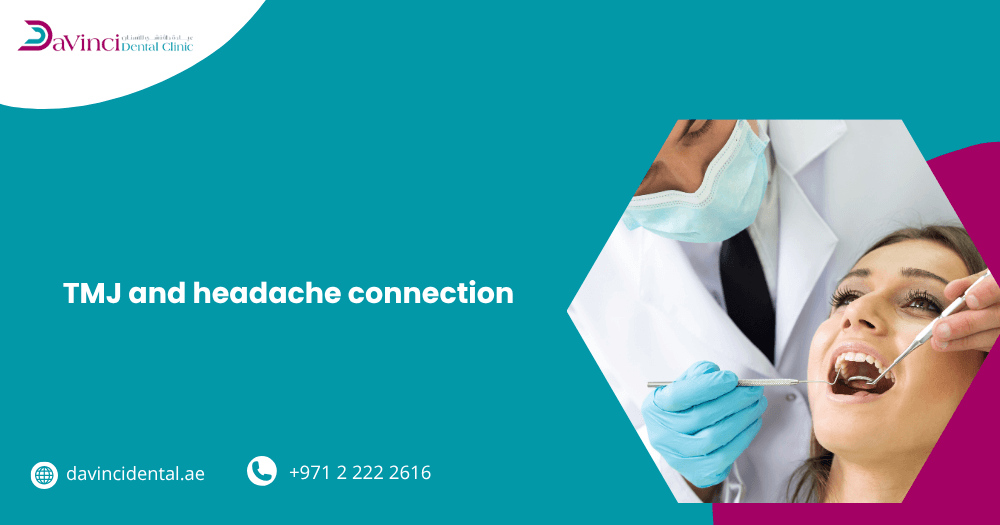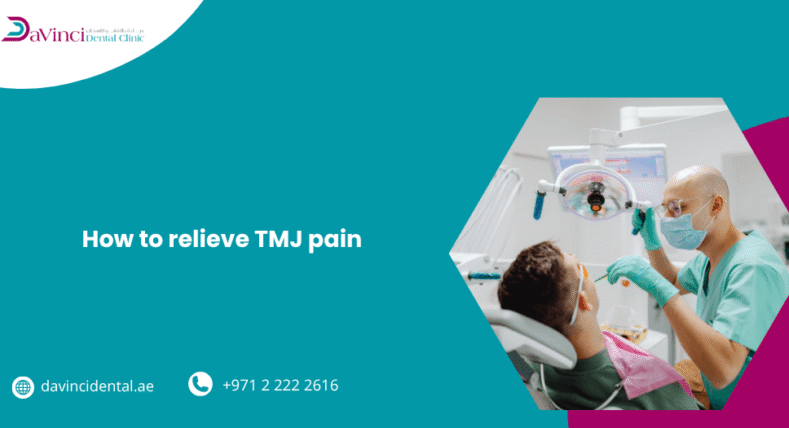Many people get persistent headaches without recognizing that the source may not be their head at all, but their jaw.
The TMJ and headache connection is a common yet often overlooked cause of persistent head pain. Tension-like or migraine-like headaches can arise from discomfort spreading to the temples, neck, and even the head when the temporomandibular joint (TMJ) becomes stretched or misaligned.
In this article, we’ll look at what TMJ is, how it’s related to headaches, what symptoms to watch for, the many types of headaches connected with TMJ issues, and the best techniques to get long-term relief.
Table of Contents
What Is TMJ?
The two joints that enable side-to-side movement and opening and closing of your jaw are called temporomandibular joints. TMJ disorders include a wide range of problems affecting these jaw joints, such as:
- Jaw muscles that are tense and stiff.
- Jaw joints that are misaligned or displaced.
- Joint arthritis in the jaws.
- Bruxism, which is the grinding of teeth and clenching of the jaw.
The TMJ problem is characterized by:
- Jaw discomfort or soreness.
- Locking of the jaw.
- Clicking or popping sounds while opening the mouth.
- Headaches or migraines.
Dizziness, ringing in the ears, neck discomfort, and other symptoms related to jaw dysfunction are also common in patients with TMJ conditions.
The temples or the area surrounding the eyes and cheeks are frequently where headache discomfort is felt.
What Is The TMJ And Headache Connection?
The intimate anatomical contact between the temporomandibular joint and the surrounding blood vessels, muscles, and nerves is the cause of the TMJ and headache connection. Headaches can be caused by several conditions that alter the TMJ’s normal function, such as:
- Muscle Tension: TMJ issues can result in tension in the surrounding muscles, which can trigger migraines or cause tension headaches.
- Nerve Compression: When the TMJ malfunctions, it can compress neighboring nerves, resulting in excruciating headaches.
- Vascular Changes: Inflammation and swelling of the blood vessels surrounding the TMJ might interfere with regular blood flow and cause headaches.
- Transferred Pain: A variety of headache syndromes can arise from TMJ issues that cause pain to be transferred from the joint to other parts of the brain.
What Are the Symptoms of a TMJ Headache?
Many people with TMJ problems are unaware that they are related to their headaches. TMJ may be the source of your discomfort if you have any of the following symptoms:
- Headaches that begin close to the ears or temples.
- Popping or clinking sounds are caused by opening and closing your mouth.
- Chewing or yawning problems.
- Headaches in the morning after a night of teeth grinding.
- Headache along with shoulder or neck pain.
Types of Headaches Associated with TMJ Disorders
TMJ dysfunction can cause a variety of headaches, such as:
- Tension Headaches: These are the most common type of headache. Tension headaches are frequently brought on by muscular stress from TMJ disorders. Usually, they manifest as a dull, continuous, simultaneous pain in the head, neck, or shoulders.
- Migraine Headaches: It is believed that TMJ dysfunction-related muscular tension and inflammation may serve as migraine attack triggers.
- Cluster Headaches: These unusual and painful headaches are characterized by sudden, intense pain in or around the eye.
- Cervicogenic Headaches: Because TMJ issues affect the cervical spine and related muscles, they may cause cervicogenic headaches, which are triggered by neck pain or dysfunction.
How To Find Relief From TMJ-Caused Headaches?
At Davinci Dental Clinic, there are a few options that we can use to help you with TMJ headaches, including:
Changes in lifestyle
It can be beneficial to change minor jaw-related habits, such as:
- Avoiding firm or chewy food.
- Lowering tension to stop coping mechanisms like clenching the jaw.
- Relaxing your muscles by doing jaw exercises.
- Avoiding jaw motions such as those made when chewing gum or yawning widely.
- Short-term usage of nonsteroidal anti-inflammatory drugs (NSAIDs). This includes naproxen, ibuprofen, and aspirin.
Doctor-prescribed treatments
If over-the-counter medications aren’t relieving your symptoms, discuss other possibilities with your doctor. They can decide to recommend a stabilizing splint (bite guard) or prescribe something stronger to relieve the discomfort. You can also receive a stabilizing splint from your dentist.
Splints are a popular therapy for TMJ, and they will be quite effective if your headaches or discomfort are coming from clenching or grinding your teeth.
Surgical treatments
Other, more permanent treatments include things like dental procedures and surgery to modify your bite permanently.
They vary from open-joint surgeries like arthroplasty (joint repair or disc replacement) and complete joint replacement to less invasive techniques like arthrocentesis (flushing the joint) and arthroscopy (using a camera and tiny tools).
Read More: TMJ Therapy Options.
Conclusion
The TMJ and headache connection highlights how closely your jaw health is linked to overall head and facial comfort. It’s essential to see a dentist who specializes in TMJ disorders if you often get headaches accompanied by jaw pain, clicking noises, or tense muscles.
You may reduce pain, regain normal jaw function, and avoid headaches in the future with the correct diagnosis, which can range from straightforward lifestyle modifications to advanced dental or surgical solutions.
Your comfort and quality of life can be significantly improved by understanding and managing the relationship between the TMJ and headaches.
Read More: How to Relieve TMJ Pain.
Frequently Asked Questions
Is TMJ linked to headaches?
Yes, your jaw and cheeks are lined with TMJ muscles, which can occasionally hurt and even give you headaches. A headache can result from strained jaw muscles, such as those caused by grinding your teeth, which can also cause discomfort in other TMJ muscles and the top of your head.
What does a TMJ migraine feel like?
TMJ headaches can sometimes mimic tension headaches, which are characterized by dull pains, tightness, or pressure on one or both sides of the head. They accompany TMD symptoms, such as face and jaw discomfort, or popping and clicking in the jaw.
How to fix a TMJ headache?
There are several steps you can take to alleviate TMJ headaches, including practicing jaw relaxation techniques, maintaining good posture, reducing stress levels, trying Heat or Cold therapies, gently stretching your jaw, and avoiding hard or chewy foods.




